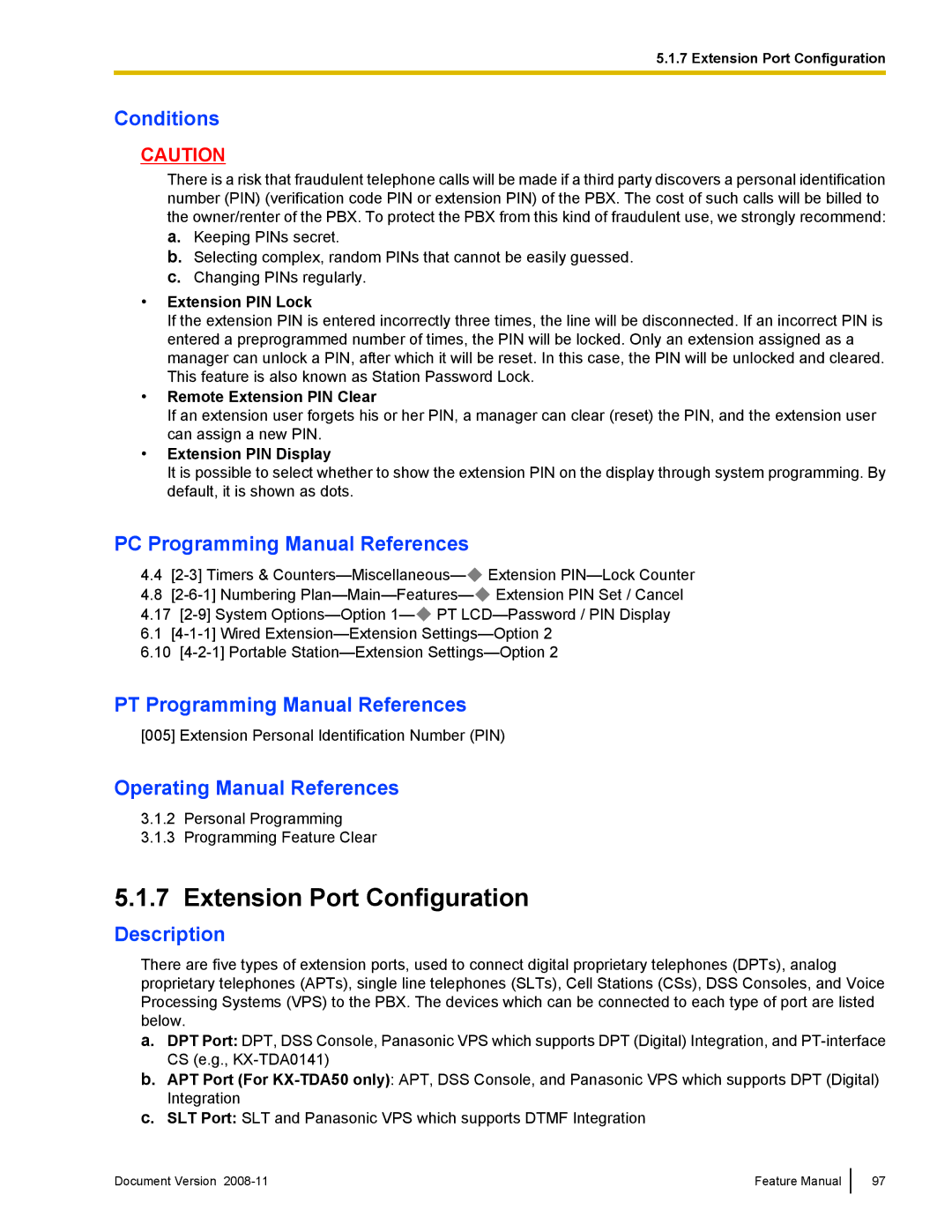
5.1.7 Extension Port Configuration
Conditions
CAUTION
There is a risk that fraudulent telephone calls will be made if a third party discovers a personal identification number (PIN) (verification code PIN or extension PIN) of the PBX. The cost of such calls will be billed to the owner/renter of the PBX. To protect the PBX from this kind of fraudulent use, we strongly recommend:
a.Keeping PINs secret.
b.Selecting complex, random PINs that cannot be easily guessed.
c.Changing PINs regularly.
•Extension PIN Lock
If the extension PIN is entered incorrectly three times, the line will be disconnected. If an incorrect PIN is entered a preprogrammed number of times, the PIN will be locked. Only an extension assigned as a manager can unlock a PIN, after which it will be reset. In this case, the PIN will be unlocked and cleared. This feature is also known as Station Password Lock.
•Remote Extension PIN Clear
If an extension user forgets his or her PIN, a manager can clear (reset) the PIN, and the extension user can assign a new PIN.
•Extension PIN Display
It is possible to select whether to show the extension PIN on the display through system programming. By default, it is shown as dots.
PC Programming Manual References
4.4![]() Extension
Extension
4.8![]() Extension PIN Set / Cancel
Extension PIN Set / Cancel
4.17![]() PT
PT
6.1
6.10
PT Programming Manual References
[005] Extension Personal Identification Number (PIN)
Operating Manual References
3.1.2Personal Programming
3.1.3Programming Feature Clear
5.1.7Extension Port Configuration
Description
There are five types of extension ports, used to connect digital proprietary telephones (DPTs), analog proprietary telephones (APTs), single line telephones (SLTs), Cell Stations (CSs), DSS Consoles, and Voice Processing Systems (VPS) to the PBX. The devices which can be connected to each type of port are listed below.
a.DPT Port: DPT, DSS Console, Panasonic VPS which supports DPT (Digital) Integration, and
b.APT Port (For
c.SLT Port: SLT and Panasonic VPS which supports DTMF Integration
Document Version | Feature Manual |
97
